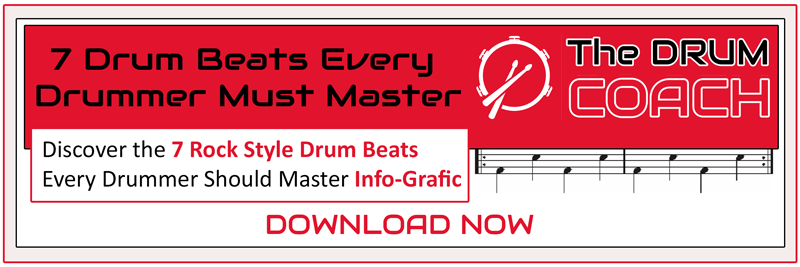Have you ever wondered why so many drummers take the time to learn how to read music? In this post, I’ll break it down and reveal the surprising advantages that reading music can bring to your drumming journey. By the end, you’ll understand not only why people learn to read music but also how simple and rewarding it can be for drummers.
If you think learning to read music is only for piano players or other orchestral instruments, think again. For drummers, reading music can open up new opportunities, speed up your progress, and make practice sessions more efficient. Whether you’re new to drumming or a seasoned player, this skill could be the key to reaching your next level of drumming abilities.
Let’s start with the big question: Why do people learn to read music in the first place? Just like learning to read words—it enhances communication and understanding. For drummers, reading music bridges the gap between theory and practice. Imagine walking into a rehearsal or studio session, looking at a drum chart, and immediately knowing what’s expected of you. Or rather, what the music expects of you. It eliminates guesswork and helps you focus on executing dynamic ideas and concepts with precision. Plus, reading music can significantly speed up the learning process, especially when working through books or exercises.
Let’s take a deeper look:
Opens Up Opportunities.
Learning to read music allows drummers to expand their horizons beyond basic beats and patterns that are played by millions of other drummers. It provides the foundation to explore diverse musical styles and genres while elevating the drummer’s professional standing in the industry. A drummer who can read music is often seen as more proficient, adaptable, and reliable in various musical contexts.
Accurate Interpretation.
Being able to read drum notation ensures that drummers can faithfully recreate what a composer or arranger intended for a particular piece of music. This accuracy is vital for more professional settings where following a specific arrangement is required, by all of the musicians in the band, such as in live performances or studio recordings. Of course, there are others, but you get the idea.
Facilitates Quick Integration.
Drummers who read music can easily integrate with bands, orchestras, and studio ensembles, usually on the spot. They are usually able to quickly adapt to sheet music or charts, ensuring seamless collaboration and minimizing rehearsal time. This skill also enhances their ability to follow cues and transitions during live performances or recording sessions.
Deeper Understanding.
Reading music allows drummers to internally visualize and understand complex rhythms and time signatures, ideas, and concepts. This comprehension helps them break down and master intricate patterns while improving their ability to play with precision and nuance.
Complex Compositions.
When drummers can read drum music, drum charts, or exercises, they are better equipped to approach challenging pieces without any apparent hesitation. They can analyze the written notation and practice specific sections systematically, boosting their confidence in handling demanding compositions. They are also able to do this within their mind as they analyze a piece of music.
Communication With Other Musicians.
Reading music creates a common language between drummers and other musicians, of every kind. This shared knowledge makes it easier to discuss changes, dynamics, and arrangements, fostering smoother and more effective collaborations in both rehearsal and live performances.
Career Opportunities.
Many professional gigs, such as theater performances, studio sessions, or teaching roles, require the ability to read music. Drummers who can read charts and scores therefore have access to a wider array of music and drumming opportunities, making them more competitive and versatile in the job market.
Technical Proficiency, Timing, and Precision.
Reading music enables and encourages drummers to focus on timing, articulation, and dynamics. Not to mention coordination. It allows them to practice with structure and encourages greater self-discipline, which improves their overall technical skill.
Diverse Musical Experiences
With the ability to read music, drummers can engage with a broader range of musical projects. Whether performing classical pieces, playing jazz standards, or creating their own arrangements, this skill enables them to fully explore their creative potential and enjoy more diverse and fulfilling experiences.
Is It Difficult?
Another big question to consider is whether learning to read music is difficult. The truth? It’s much simpler than most people think. Once you can actually play the drums. Drumming is primarily about rhythm and time, so learning to read music boils down to understanding note values and interpreting them accurately. Add a few basic musical symbols and terms to your vocabulary, and you’re ready to go. Think of a drum chart as a map of a song, guiding you through every beat, dynamic, and transition.
And it does that in layers. First, you have the road map of the song. Followed by the beats you need to learn and play within each section. Then there are the fills and their specific locations within the music. After which, there’s the phrasing throughout to consider. And finally, the dynamics within the music.
If you’re just getting started, check out the Drumming Foundation’s free book, The Most Popular Musical Terms. It’s packed with essential terms and symbols to help you get a head start. Download it and start building your music-reading skills today.
In the next post, we’ll tackle another common challenge: How can I make my drums quieter? Whether you’re practicing at home or dealing with other noise restrictions, I’ll share practical tips and solutions to help you keep the volume under control, so you can practice more. Don’t miss it—hit that subscribe button, and let’s keep improving together!






